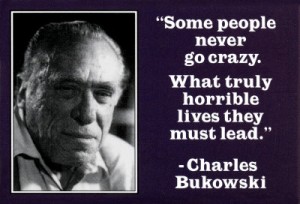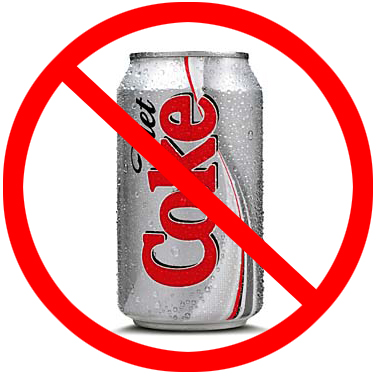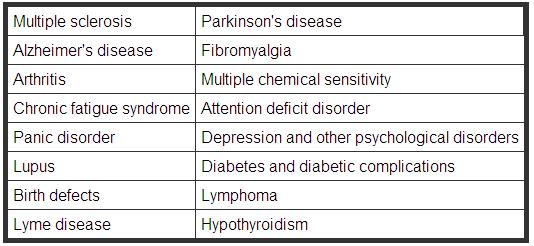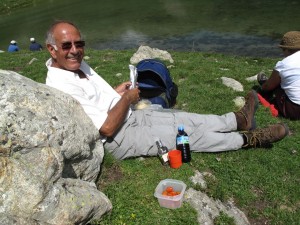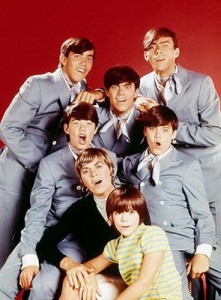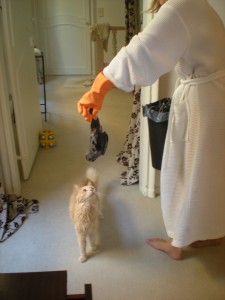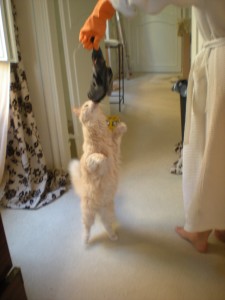Archive for July, 2010
-
Day 152: Now I Remember How Hard It Is!
Lots of work and traveling, on the road with my producer – and it’s always fun to go back to broadcast work in between print assignments… But have been so busy I just fall into bed without updating a certain site…
All this means, however, fabulous hotels with menus displaying desserts like creme brulee, chocolate cake fondant (this amazing chocolate cake with a soft wet interior.) Need I go on? I think not. When I’m living the abstemious life at my world headquarters, I avoid such tempting menus and almost forget that such glorious desserts exist.
But working hard – and not having dessert at the end of the day? Forget what I said. This is hard.
Ta,
-
Day 144: Missing “Angie” – More Spy than Sweetheart
Photos of Angelina Jolie at the premiere of her new spy-thriller Salt surfaced this week and I got nostalgic for Angelina’s big summer production of 2008.
That was when she and Brad moved into Chateau Miraval just outside one of France’s prettiest villages, Correns, and she decided to give birth to her twins at Fondation Lenval, a hospital right on the Mediterranean about 15 blocks from me. So thoughtful!
“Salt” was a ways off but Angelina conducted herself as an international spy when she was in the south of France – outwitting all the crazy press that stalked her. And looking good and delivering twins while doing it!
I biked to work for the month that “Angie,” which is what all the paparazzo called her, was at Lenval. First she waited three weeks in the hospital to have her babies, then she kept them there a week.
The eccentric paparazzo – I remember one German guy who drove in from Munich with a camper van and car attached and had two enormous dogs who slept in his car outside the hospital – entertained me during the long days when rumors flew about Angelina having her babies while we tried in vain to substantiate them.
This was back when I was still eating sweets and my favorite Angelina-era dessert was the baklava in the Lebanese pastry shop kitty-corner from the hospital.
Lenval is not in a nice area of town although it faces the Mediterranean and from the beach it looks like a blue and glass futuristic Bond lair. The trannies come out at night. A truly mad Englishman from the National Enquirer (who was thrown out of his hotel room for reasons that are still unclear) got in a fight one night with some trannies who sat on the hood of his ancient Mercedes, denting it permanently.
Fluff story, you say? Not really. It was the biggest story of the year for People magazine and even though no one ever admits to reading People outside a dentist office, it’s the publication that arguably mirrors America more than any other one.
Brad and Angelina arrived in the south of France in May 2008 and stayed here for more than four months. I got to see how she operates by covering her while she was here, not to mention the crazy 24 hours during which her twins were finally born.
The photographers who track Brangelina’s every move are odd ducks but they’re also a serious lot – since one photo of Angelina (like the one that made the cover of In Touch Weekly taken from a light plane of a very-pregnant Angelina standing outside her chateau) can net over $500,000.
They’ve got Interpol scanners in their SUVs and contacts who give them private jet flight manifestos, the works. Me, I only confirmed the birth of her twins (after In Touch incorrectly said she had given birth to two girls) by tracking down her obstetrician at home early in the morning. I found him through the French white pages. Very low-tech I know.
Angelina outwitted everyone, except the one photographer who got the big-bucks In Touch photo and became a friend of mine. A fascinating guy himself and a match for scary-smart Angelina – who used a helicopter to land on the roof on Lenval when she arrived (no one found out for two days) and left in two unmarked vans late in the middle of the night. It was all very Bourne Identity.
Oh, and she arranged ahead of time (Angelina has no publicist and does everything with just her cell phone) to give the entire scoop about the twins birth to Nice-Matin. The lucky reporter then wrote a series of gloating stories mocking every other journalist who didn’t have full access as he did. One day I even made one of his columns as he described me translating one press conference live from my phone to New York, pointing out that “this is the type of news Americans pay attention to.”
I wonder what will happen to Angelina in the long run. If you are inside her world, you know she arranges photo ops with her kids ahead of time with favored photographers. Nothing is left to chance. Someone who has covered her for more than 10 years characterizes her as “depressed.”
Maybe she was depressed but maybe meeting Brad and having her six kids cured her of that. Having the world believe she is the luckiest, most accomplished actress, lover, mother etc. probably helps her believe it, too.
I tend to believe what she once said about always having had too much energy for the room and how sometimes that energy got turned back on her. Now she has such a big life, the energy just goes forward.
I can’t help but admire her, because what she does requires so much intelligence, talent, stamina and derring-do. She’s even a licensed pilot and adheres to an amazing work ethic when it comes to making films on a regular basis, not to mention her humanitarian work.
What I don’t admire is how much she talks about her kids’ personal lives and how she lets them be photographed. During the Cannes Film Festival in 2008, Brad and Angelina brought Shiloh to the Bonpoint children’s clothing store in the center of Cannes and it was predictably mobbed.
Shiloh was only 2 at the time and looked so small and vulnerable standing in this store with all the vultures outside. I didn’t see why her parents thought it was a good idea to bring her into that chaos.
Something that struck me, however, while covering Angelina at Lenval hospital was that she never had any girlfriends visit her. She has a full-time assistant but, unlike Jennifer Aniston and her crack support team of BFFs, I’ve never seen references or proof that Angelina has women friends.
Brad and the kids showed up every day (that’s them above arriving at Lenval one afternoon) and her brother, James Haven, visited a couple times. But never any girlfriends. I don’t have sisters, either, but I’ve made up for it with a ton of amazing women friends. Angelina doesn’t seem to need them.
Still, Angelina has the biggest, coolest life of anyone I know. And now she has three little girls who can be her friends.
-
Day 143: Who Needs Candy When…
you have unconditional love?
-
Day 142: What It’s Really Like to Give Up Candy
I had in mind writing a post last week about what it’s like living in place that can feel as hot and humid in July as south Florida – but where everyone is vehemently against air conditioning. No, it doesn’t help to argue with the locals that 17,000 people died in a heat wave in 2003 in France. They despise air conditioning, are convinced it makes you sick and there is no telling them otherwise. (I didn’t write the post last week, it was too hot.)
Also, the Trackpad on my new-ish MacBook seized up last week – during a power outage in my building! Bye to my MacBook as it goes into the hospital. A day later my new air conditioner began leaking as I was pounding on my ancient Powerbook which won’t CAPITALIZE unless you take a hammer to every key. Who cares, I know.
I feel like a sloth hanging upside down in my top-floor jungle…
But I really want to say what it feels like to give up candy and all desserts for what is coming up on five months.
It doesn’t feel like what you read in books or magazines about giving up something bad for you. I rarely experience the life-changing miracles that other people talk about after undertaking some new program or diet or even idea. Miracles sneak up on me in subtle ways.
I don’t spring out of bed at 6 a.m. with super-clear eyes and a new lease on life as a result of giving up candy. I physically don’t feel different.
It hasn’t been that hard to give up candy. I have a craving; it passes quickly. If I had a Lindt chocolate bar today, though, I bet I’d be back to candy full-time.
I have not lost weight. I’ve gained two pounds. So disappointing. But I also believe that sugar sped up my metabolism the way cigarettes do for smokers. I don’t eat any more than I did before.
Two months into giving up candy I felt slightly flat, odd for someone who is normally very high energy. One night I spoke about it to my friend Mathias and the very action of talking about it to him caused the flat feeling to stop. He didn’t say anything remarkable, either.
Still, I feel different emotionally. It’s bittersweet. I’m still an optimist but it’s as if the scales have gently fallen from my eyes.
This was not what I expected. Not very sexy sounding, is it?
New Age types (and I like some of them especially if they are of the smart, provocative variety, like Daniel Pinchbeck or Terence McKenna or Aleta St. James or Sharon Gannon of Jivamukti Yoga) often use the expression “waking up” to describe the process of becoming more conscious.
Is having to face reality the price of sobering up from sugar?
Pass the chocolate, please!
Why couldn’t I be one who just lost weight and lived happily ever after as a result of giving up candy?
I’m reading Jonathan Safran Foer’s excellent exploration of the meat industry called Eating Animals. It’s hard to read. All the more because Foer doesn’t proselytize or reduce eating meat to a black-and-white issue.
At its deepest, scariest level it’s all about how we are the most lethal animals of all.
I remember someone once telling me “humans” are different from “animals” because we have the “spark of the divine.” It’s such a pretty-sounding sentiment. So it’s dogs, cats, ostriches and whales that caused the BP oil spill, who have overfished the planet to the point you can’t swim in the Mediterranean anymore without fearing the flash-burn of the jellyfish sting?
(Then again, I saw Serbian rock star Goran Bregovic last night at the Nice Jazz Festival and he does have the spark of the divine…)
Still, I walked into the KFC on Avenue Jean Medecin on my way back from an appointment today and looked at the people eating Chicken Fingers. Now that I have read about KFC in Eating Animals, I wanted to hand out copies of the book to everyone in there.
My friends are getting a wary look on their faces when I mention Eating Animals as if they’re worried I’ll start lecturing them. Almost as if everyone knows what’s in the book on some level and it’s so enormous it’s more than just deciding to go vegetarian.
Will I give up meat? Who knows and I bet not as of today. If giving up sugar is going to turn me into an dour scold checking out local KFCs, what will life without meat make me?
Which brings me to Charles Bukowski. Do you know him? I was scornful of him before I happened to read Women at a friend’s place in Paris a few years ago.
I liked Women so I was no longer as quick to write Bukowski off as a smart guy who ripped off John Fante’s style (Ask the Dust) and found fame as the Drunk, Dissolute writer. (A very prolific writer, for such an allegedly serious drunk, I might add.)
Bukowski basically writes prosaic, repetitive crap about getting drunk, sleeping with crazy women and going to the track. No talent there, it would appear.
But when reading Eating Animals gets too much, I pull out one of my forgettable Bukowski books. Who do you think I’m going to read? John Updike? Nothing but talent, I’m told. But does anyone actually read John Updike?
I love reading Bukowski at times like these.
Never underestimate the ability of an alcoholic to cheer you up and to make sense out of a world where giving up candy makes you gain weight and “factory farmers” routinely cut the beaks off chickens with hot knife machines to make Chicken Fingers.
“…That there’s an out helps you stay in. Get it? Otherwise, it would only be madness. And that’s no fun, buddy. And whenever I get off a good poem, that’s another crutch to keep me going. I don’t know about other people, but when I bend over to put on my shoes in the morning, I think, Christ-oh-mighty, now what?
I’m screwed by life, we don’t get along. I have to take little bites of it, not the whole thing. It’s like swallowing buckets of shit. I am never surprised that the madhouses and jails are full. I like to look at my cats, they chill me out. They make me feel all right. Don’t put me in a roomful of humans, though. Don’t ever do that…
To my right the radio works hard bringing me more great classical music. I listen to 3 or 4 hours of this a night, as I am doing other things, or nothing. It’s my drug, it washes the crap right out of me.
And Mahler is on the radio, he glides with such ease, taking big chances, one needs that sometimes. Then he sends in the long power rises. Thank you, Mahler, I borrow from you and I can never pay you back.
There’s a small balcony here, the door is open and I can see the lights of the cars on the Harbor Freeway south, they never stop, that roll of lights, on and on. All those people. What are they doing? What are they thinking? We’re all going to die, all of us, what a circus! That alone should make us love one another, but it doesn’t. We are terrorized and flattened by trivialities, we are eaten up by nothing.
Keep it going, Mahler! You’ve made this a wondrous night. Don’t stop, you son of a bitch! Don’t stop!”
(from The Captain is Out to Lunch and the Sailors Have Taken Over the Ship by Charles Bukowski)
Thanks for reading such a long post! Clearly, the heat has gotten to me.
And one final question:
Should I be made into bacon?
Ta,
-
Day 138: Let’s Keep This Party Started!
Some quick-witted people are actually slow to catch on.
Take me, for instance. Owner of two iPods that I can never be without.
It took me until this week, more than four months Without Candy, to realize I have a drug addiction more powerful than sweets.
My favorite drug is actually music. Don’t get me wrong – I’ve craved candy and desserts since I was a toddler. But given the choice between chocolate and music – EVEN IF CHOCOLATE WERE BETTER FOR YOU THAN BROCCOLI AND CALORIE-FREE – I’d take music any day.
A friend surprised me out of the blue this week with VIP tickets for Pink at Nikaia Stadium in Nice. I love love love Pink, who at 30 could be the kid sister or even daughter (Yikes!) of my adored Madonna, whom I make the pilgrimage to see wherever and whenever she is on tour – in Europe or the U.S.
Pink writes or co-writes all her songs, doesn’t lip sync on tour, and has a killer voice that would take Madonna’s any day in an Auto-Tune bar fight. Artists like Pink give me the sweet surge to keep the party started when I can’t eat the candy and ice cream that i want. And she’s better than all desserts.
Pink is the world’s most underrated superstar. Her only problem is her hair – she wears it super-short, which pleases a segment of her fan base – but doesn’t do it for a public weaned on hypersexual, long-haired blondes like Britney Spears and Jessica Simpson. Check out her single about singers like them called “Stupid Girls.” Even Ellen De Generes wears her hair longer than Pink (who is married by the way.)
Pink has a beautiful face, especially when framed by long hair that you hardly ever see her wear. Wearing it dyke-short is her way of not crossing over to the girly, singing-challenged Taylor Swift (who can barely carry a tune in concert) side. But it costs her superstardom.
It was so fun to go backstage and hang with Pink’s tour coordinator Bill Buntain and crash into Joel Madden (of opening act Good Charlotte) at the buffet table. Right outside the door of the crew area was the massive container where Pink (and two stagehands) climb into at the start of Pink’s concert.
(If anyone saw Pink’s ultra-amazing Grammy performance, in which she performed her new single, “Glitter in the Air” in the air without lip-syncing (take that Britney and bitches), you may already know she’s a former gymnast and fearless to boot.)
Pink begins the concert by dropping down from the container, which is lifted high above the stage, and ends it by getting in a harness and soaring, Tinkerbell style, in a fabulous purple sequined outfit, high above the audience.
In between, during a two-hour concert marked by heat and humidity so intense she even said her makeup was melting into her eyes, Pink got inside a huge ball and rolled on top of the audience.
I know that in a way, in this day and age, rock stars are a dime a dozen. But they never cease to amaze me. Sitting backstage before the concert, when Bill was talking about what a “unit” Pink and the band and the dancers are, and how they all do the “Insane” workout every day in a room at whatever venue they are at – I still had to ask him how she does it.
What if you have a bad day? What if you suddenly get overwhelmed at the prospect of getting in a container and having a crane lift you up in front of 15,000 people and then drop you down onto the stage?
Bill has worked for other stars and says even when they have a bad day, the energy of getting out there and feeling the audience gives them the jolt they need to perform for, say, two hours.
For me, artists like Pink provide me with the music that forms the soundtrack of my life and keeps me inspired and happy. But they also do something more. I admire them the way I admire Olympic skier Lindsay Vonn, who once says she looks at a tough hill and figures out how to attack it. It’s not about letting the mountain attack her.
People like Pink remind me that there are humans who go out there and get on top of life, attack it, master it, perfect it – at least for one night.
They give me a rush that even sugar can’t match.
They show me that it’s possible.
-
Day 135: Sugar: Opiate of the People?
SUGAR
A Bittersweet History
By Elizabeth Abbott
Illustrated. 453 pp. Duckworth Overlook. $29.95
Reviewed in The New York Times July 11, 2010 by Isaac Chotiner
The most dispiriting aspect of our belated environmental consciousness is the realization that many of the delightful substances we put into our mouths — like cold bottled water and imported produce — have costs that far outweigh the immediate gratification they deliver.
In “Sugar: A Bittersweet History,” her thorough, workmanlike new study, Elizabeth Abbott reminds us that this has been true for centuries. A hundred years before Pushkin described ecstasy as “a glassful of tea and a piece of sugar in the mouth,” the demands of the sugar economy had ripped apart African communities and forced slaves across the Atlantic to work sugar cane plantations. Abbott’s book, which discusses the effects of sugar on everything from the Haitian revolution to Hitler’s Germany, serves as a grim reminder that a consumer’s choices register on a gigantic scale, and are therefore as much political as personal.
Elizabeth Abbott, the author of “A History of Mistresses” and “A History of Celibacy,” only briefly discusses sugar cane’s impact before the last 500 years, although sugar appears in two millenniums of New Guinean and Indian legends and records. (Sugar cane was first domesticated in New Guinea.) By the middle of the 17th century, the French, English and Dutch empires were all actively competing for Caribbean land that would support their sweet tooth. Some early plantation workers were in fact poor Europeans, many of whom perished under the abusive and sickening conditions. The owners managed just fine, however: of the estimated 11 million slaves who traveled to the New World, more than half worked on sugar plantations.
Abbott’s description of the Middle Passage and the gruesome inhumanity that continued upon arrival breaks no new ground, but is appropriately powerful: “Slaves, many of them women, were then working 18 to 20 hours a day, and often fell asleep or faltered as they fed cane through the huge rollers. The rollers easily caught a careless hand and pulled its owner along through the roller, crushing her to death. This was such a frequent occurrence that many overseers kept a hatchet or saber at the ready so they could chop off the trapped limb to save the slave’s life.” Abbott also wisely circles back to the effect that the slave trade had on those Africans who stayed put; they endured social dysfunction and a commodity market that spiraled downward thanks to an influx of European goods — the same goods that had been traded for slaves.
Abbott is on shakier ground when she turns to the Haitian revolution’s relationship with sugar, failing to enliven one of history’s most dramatic chapters. She does, however, explain the process by which a “noble delicacy” trickled down to the middle classes and eventually to entire societies. She offers up a number of fascinating stories, including Hitler’s attempts to ensure a steady supply of sugar through the worst horrors of the war. (Orwell, in “1984,” was canny to present a totalitarian system that understood even its most traumatized citizens would rally at the news of an increase in chocolate rations.)
Still, too much of the material about sugar’s role in domestic life is dull: “Children, too, enjoyed ice cream and soda, and accompanied their mothers and fathers to ice cream saloons and soda fountains.”
And even if Abbott’s perspective is generally sound, her overarching theory of sugar’s importance is too grand. “Sugar slavery’s most insidious creation,” she writes, “was the racialism that justified enslaving Africans and forcing them into the cane fields.” Her source here is Eric Williams, the great Caribbean historian (and first prime minister of Trinidad and Tobago), who himself was much influenced by the Marxist C. L. R. James’s groundbreaking work.
Williams noted that “slavery was not born of racism; rather, racism was the consequence of slavery.” One can appreciate the economic role in the creation and perpetuation of an evil system, but it is much too glib to claim that sugar bears responsibility for racism. There was racism before slavery, and there was cruelty before the rise of the sugar economy.
Isaac Chotiner is the executive editor of The Book: An Online Review at The New Republic.
Enough reading for today!
Time for a swim.
Ta,
-
Day 130: Stay Away from Aspartame!
I should talk, really, because I’ve slipped a bit with my ban on Diet Coke in recent weeks after not drinking any for months. But I know how horrendous the chemical sweetener aspartame – which is found in Diet Coke as well as a billion other products – is for living things.
By the way, for a great blog about giving up the devil’s favorite beverage, check out my friend and NBC super-exec Kevin Goldman’s A Year With Diet Coke (yes he freely admits getting the idea from me!)
Read Dr. Joseph Mercola’s screed against the Satanic sweetener aspartame in today’s Huffington Post here and also as reprinted below:
Aspartame is the most controversial food additive in history, and its approval for use in food was the most contested in FDA history. In the end, the artificial sweetener was approved, not on scientific grounds, but rather because of strong political and financial pressure. After all, aspartame was previously listed by the Pentagon as a biochemical warfare agent!
It’s hard to believe such a chemical would be allowed into the food supply, but it was, and it has been wreaking silent havoc with people’s health for the past 30 years.
The truth is, it should never have been released onto the market, and allowing it to remain in the food chain is seriously hurting people — no matter how many times you rebrand it under fancy new names.
The Deceptive Marketing of Aspartame
Sold commercially under names like NutraSweet, Canderel and now AminoSweet, aspartame can be found in more than 6,000 foods, including soft drinks, chewing gum, table-top sweeteners, diet and diabetic foods, breakfast cereals, jams, sweets, vitamins, prescription and over-the-counter drugs.
Aspartame producer Ajinomoto chose to rebrand it under the name AminoSweet, to “remind the industry that aspartame tastes just like sugar, and that it’s made from amino acids — the building blocks of protein that are abundant in our diet.”
This is deception at its finest: begin with a shred of truth, and then spin it to fit your own agenda.
In this case, the agenda is to make you believe that aspartame is somehow a harmless, natural sweetener made with two amino acids that are essential for health and present in your diet already.
They want you to believe aspartame delivers all the benefits of sugar and none of its drawbacks. But nothing could be further from the truth.
How Aspartame Wreaks Havoc on Your Health
Did you know there have been more reports to the FDA for aspartame reactions than for all other food additives combined?
In fact, there are over 10,000 official complaints, but by the FDA’s own admission, less than 1 percent of those who experience a reaction to a product ever report it. So in all likelihood, the toxic effects of aspartame may have affected roughly a million people already.
While a variety of symptoms have been reported, almost two-thirds of them fall into the neurological and behavioral category consisting mostly of headaches, mood alterations, and hallucinations. The remaining third is mostly gastrointestinal symptoms.
This chart will familiarize you with some of the terrifying side-effects and health problems you could encounter if you consume products containing this chemical.
Unfortunately, aspartame toxicity is not well-known by doctors, despite its frequency. Diagnosis is also hampered by the fact that it mimics several other common health conditions, such as:
keep reading article here…
-
Day 128: A French Fourth of July
What better way to spend the Fourth of July in France than with the first hiking club I joined when I moved here? We spent Sunday up in what the Nicois (residents of Nice) call the arrière-pays, the high back country, hiking the foothills of the Alps.
Every Sunday, club members wait at various pickup points in Nice at 6:30 a.m. and are whisked up to trailheads – that can be all the way over in Provence or the Var departments, here in the Alpes-Maritimes, or just over the border in Italy. Depending on the destination -it can take anywhere from 90 minutes to two and a half hours.
In my nearly five years here, I’ve hiked places like the Col de Tende, the high Alpine pass between France and Italy, where you walk by eerily abandoned military fortresses from the two World Wars, the piney mountains in the Esterel Massif way above St. Tropez, and one of my favorites, the Gorges du Verdun, France’s answer to the Grand Canyon.
When I went on my first hike with this particular club, the president, Pierre, warned me that some members were fairly old. That was OK, I thought, it would give me an idea of what a local hiking club would be like without any pressure. When I hopped the bus the very first time, Pierre told me the club had four groups depending on ability. The fastest group was called les grands pieds, or “the big feet.”
Of course I knew I’d go with les grands pieds. I’ve been hiking and climbing mountains – the Himalayas, Mt. Kilimanjaro, Mt. Roraima in Venezuela, Mt. Whitney in California and more – since I was 21. I’m strong and fast.
No, Pierre said. For my first time, I had to go with the base, the second-fastest group and considered the “average” group. That was the rule – and the French love their rules.
I was annoyed. This was going to be a long day, I thought. Hiking with a bunch of snail-like old people? I wish I’d never come.
P.S. We started hiking at 9 a.m., finished at 5:30 p.m. with nothing but a 10 a.m. pause banane (banana break) and a 30-minute stop for lunch. We climbed about 1200 meters during a 13-mile hike. There were several people in their late ’70s in the “average” group with me. Many were in their late 60s. When we finally got to the bus, I was so exhausted I could barely speak English, never mind French. I dozed on and off in a nursing home-like stupor all the way back to Nice. The French, in sharp contrast, chattered like high-energy magpies and acted as if they could have easily taken several more hills.
This particular group is pure Nicois and they’re known for being a closed, not particularly friendly breed, maybe because Nice has been invaded by strangers for millennia beginning with the Romans and the Phoenicians. They did everything the could to discourage me from coming in the beginning, including a refusal by many to call me anything except “l’américaine.”
But then they got used to me and welcomed me, to the point where if I didn’t come, they’d call me up and ask where I was.
They won me over in large part by their lunch traditions. I brought a vacuum-packed, ready-made sandwich from the supermarket, a can of Diet Coke and a Mars bar (what else) for lunch the first time I went with the hiking club. They looked at my plastic provisions like aliens inspecting the eating habits of an abductee.
Turns out, the French have a French meal even if they’re seated on the edge of a cliff while doing so. As I watched in amazement, they whipped out tablecloths (really!) to spread on the ground, homemade quiches, fresh cheeses, thick slices of ham, fresh bread and all sorts of delicious desserts!
During lunch, various people walk around offering something they’ve brought; fresh cherry tomatoes from their garden, figs, black Nicois olives etc. My friend Colette, a retired supermarket cashier, always bakes a chocolate cake, cuts it into slices and distributes one to everyone.
They bring bottles of wine, of course, covered in special wine socks which blew my mind the first time I saw one. And they also usually carry little flasks of liqueur de genépi, a liqueur made from an Alpine flower.
Gerard, above, is eating lunch Sunday at one of the Lacs de Millefonts, a gorgeous Alpine lake high above the treeline, reached from a point between two valleys, Vésubie and Tinée. The cherry tomatoes are from his garden and you can see the red wine he’s got poured into a little water bottle and next to him his flask of genépi. He carries with him, like all the French hikers, two little cups – one for wine and one for the coffee that someone brings in a thermos and offers to everyone else.
The high point of a group hiking lunch for me is when someone brings around the big tablet of dark chocolate and we all take a piece. Yesterday, sadly, I had to refuse.
Two things I really love about this older French group. Some of them tell me stories about their fathers who fought in the trenches in World War One and how they joked with the enemy German soldiers in the opposite trenches at night. And how lots of the fathers died in their 50s from the poison gas they inhaled as teenage soldiers.
Memorials to those killed in the two World Wars are everywhere in the small villages in the Alpes-Maritimes. Eleven percent of France’s entire population was killed or wounded in World War I, more than any other European country.
When I first starting hiking with this group, I always marveled at how they’d often stop hiking and gaze at even the smallest memorial for a few moments before continuing on. The one I noticed Sunday on our way down from the mountaintop lakes was a little different, it was in memory of a hiker, a doctor named Henri Notari, killed in 1946 by an unseen live grenade left over from the war.
The tombstone reads in part:
When you pass by, give a little thought to the memory of someone who loved the mountains as you do.
-
Day 125: Focusing on the Sweet, Not the Sour
When A Year Without Candy last checked in with our old friend, singer-songwriter Susan Cowsill, the kid from the late ’60s family supergroup, the Cowsills, (the model for TV’s The Partridge Family,) it was in Boston in 1990.
But it wasn’t until my new interview with her for the Huffington Post, that I found out the truth about her life. Her ambitious stage father/manager was abusive, like Michael Jackson’s father, and he was also sexually abusive.
Susan’s had quite the life: huge early fame, a massively dysfunctional family and in 2005 she was tested again when Hurricane Katrina wrecked her house and her brother drowned in the storm.
Yet she’s totally upbeat. ”I’ve always had this personality,” she told me, adding that not everyone chooses her optimism. “Happiness isn’t for everyone.”
Even if you’ve never heard of Susan Cowsill, my piece is worth reading to show you that not every child star ends up a trainwreck – and that you can choose to love your life no matter what.
’60s Pop Princess Susan Cowsill Talks Her New CD, Her 44-Year Career – and Michael Jackson
Susan Cowsill, the singer-songwriter whose new CD “Lighthouse” has just been released, is 51, the same age Michael Jackson would be had he not died a year ago last Friday. Both were child stars in the late ’60s and had abusive father/managers.
Cowsill, however, is a survivor – even if today she’s famous only in her adopted hometown of New Orleans, where her “Crescent City Snow” became the unofficial anthem for Hurricane Katrina.
As the kid singer in The Cowsills, the prototype for TV’s Partridge Family, she survived early fame and fortune that disappeared as fast as it came – as well as a sexually abusive father. She also made it through Katrina, even though her brother drowned in the storm and she lost almost everything, including all her family memorabilia dating back generations.
She’s now fronting the Susan Cowsill Band, 44 years after she sang with her family, the Cowsills, and after decades first as a back-up singer and later with the ’90s indie, almost-supergroup, the Continental Drifters.
continue reading article here…
-
Day 124: How Is A Dead Pigeon’s Head Like Hard Candy?
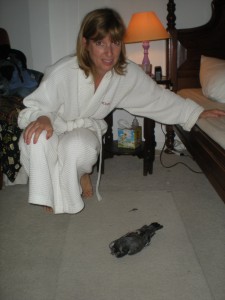 A day that begins with a gruff lawyer for the Vatican waking up you at 2 a.m. complaining about a line in your story about an arcane Supreme Court decision involving the increasingly freaked-out Catholic Church never bodes well for the remaining 22 hours.
A day that begins with a gruff lawyer for the Vatican waking up you at 2 a.m. complaining about a line in your story about an arcane Supreme Court decision involving the increasingly freaked-out Catholic Church never bodes well for the remaining 22 hours.Sure enough, after putting out the Vatican fire, I went back to sleep and was awakened again from a dead slumber around 8 a.m. by my friend Allison down the street.
Allison sounded a little freaked out herself – which was enough to freak me out since Allison is usually cool as a cucumber no matter what the circumstances.
“What’s up?” I said.
“Well,” Allison began. “ I woke up this morning and next to my bed I found a headless…”
You know how your mind works so fast you’ve got the whole thing figured out before the next word comes out? I heard “headless” and for some reason thought of the horse’s head from “The Godfather.” Oh no, someone’s placed a bloody horse’s head on Allison’s bed. This can’t be good.
“I woke up this morning and found a headless pigeon next to my bed on the floor,” Allison continued. “It’s huge. I am totally freaked out.”
Uh-oh. This could mean only one thing. Her French cat, Sienna, who looks like a huge piece of butterscotch on legs, had apparently bitten the head off a pigeon as it flew into Allison’s apartment sometime in the night in the old section of Nice where we live.
Then, Allison surmises, he carefully dragged his headless trophy up to Allison’s second-floor chambers and dropped it next to her bed for her morning viewing pleasure.
However, very eerily, there were no signs of a “struggle,” i.e. feathers or blood, Allison reported, which would certainly be expected if a pigeon flew into an living room at night and encountered a fur predator.
“It was a clean kill,” said Allison. “A spectacularly clean kill.”
My head re-spun with more conspiracy theories – unknown enemies of Allison slipping in at night with headless pigeons. We are only 12 miles from the Italian border, after all.
“My door was locked,” Allison said flatly.
Paging CSI: Nice!
Could I come over, Allison suggested.
How could I not?
I grabbed a cappucino from my friend at the café downstairs and headed over to the crime scene.
My first impression of Sienna, who was reclining on an armchair, was that he looked a little… uncomfortable.
“You would too,” said Allison. “If you were digesting a beak.”
Allison got her rubber gloves and a garbage pail with which to dispose of the headless pigeon and we walked upstairs to observe the unfortunate victim.
Allison then summoned Sienna upstairs to see if he would evince any emotion. At first he looked a little bored when he saw his former prey on the floor. He perked up a bit and got up on his hind quarters to re-inspect it after Allison gingerly prepared to throw it in the waiting garbage pail.
I finished up the rest of my coffee while Allison and I pondered if the headless pigeon was an omen of some sort, a cosmic harbinger of things to come.
I went home to do some research at the University of Google.
Not only did I find that cats often bite the heads off of birds and small animals like rabbits with “surgical precision,” I discovered why Sienna had just eaten the head and left the rest of the body behind.
It turns out that like me, Sienna prefers dessert to any other meal.
Why do cats only eat the head of (an animal) after catching them?”
Said one scholar at Yahoo! Answers:
“It probably has something to do with the fact that the heads are nice and crunchy due to the skulls and the brains are sort of soft and gooey and probably a little bit sweet because they are full of fat. For cats it is probably a lot like a human eating a hard candy with a gooey filling.”
Bon appetit!
About
Recent Posts
- Day 365: Tell the Women of Congo You Love Them!
- Day 364: What If the World Did End in 2012?
- Day 363: Twilight of the Dictators, Twilight of No Candy
- Day 353: Howl of a Candy Addict
- Day 351: Self-Deprivation Sucks
Archives
- February 2011 (8)
- January 2011 (5)
- December 2010 (2)
- November 2010 (3)
- October 2010 (14)
- September 2010 (4)
- August 2010 (7)
- July 2010 (10)
- June 2010 (11)
- May 2010 (16)
- April 2010 (35)
- March 2010 (40)
- February 2010 (4)
Sugar Free Days
Blogroll
- A Life Less Sweet
- BodySoul Adventures
- Candy Addict
- Crazy Sexy Life
- Feel Good on Purpose
- Food Politics
- Madame Lamb
- My Years Without Sugar
- Paris Breakfasts
- Stop Being Sweet
- Sugar Shock
- Sugar Stacks
- The Dip
- Vinecdote
- Women for Women International




